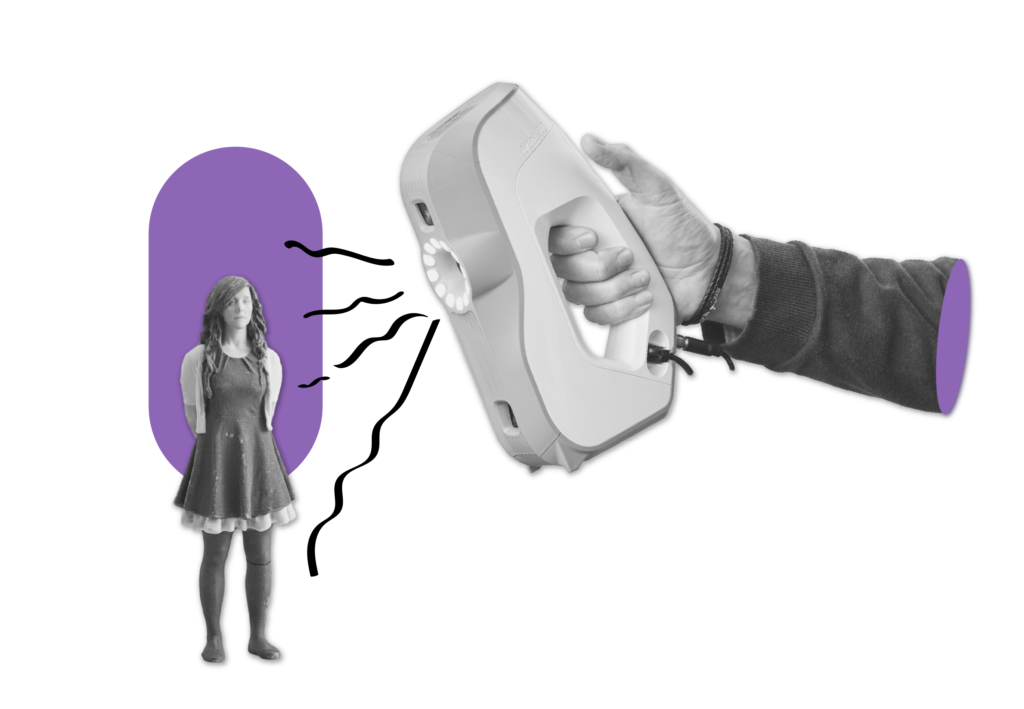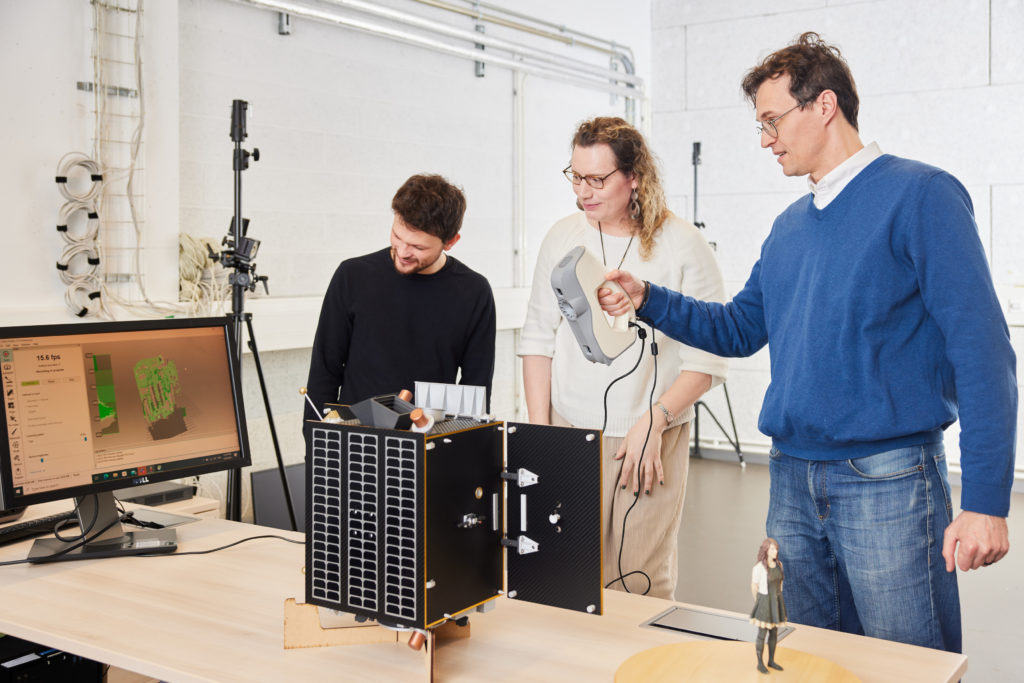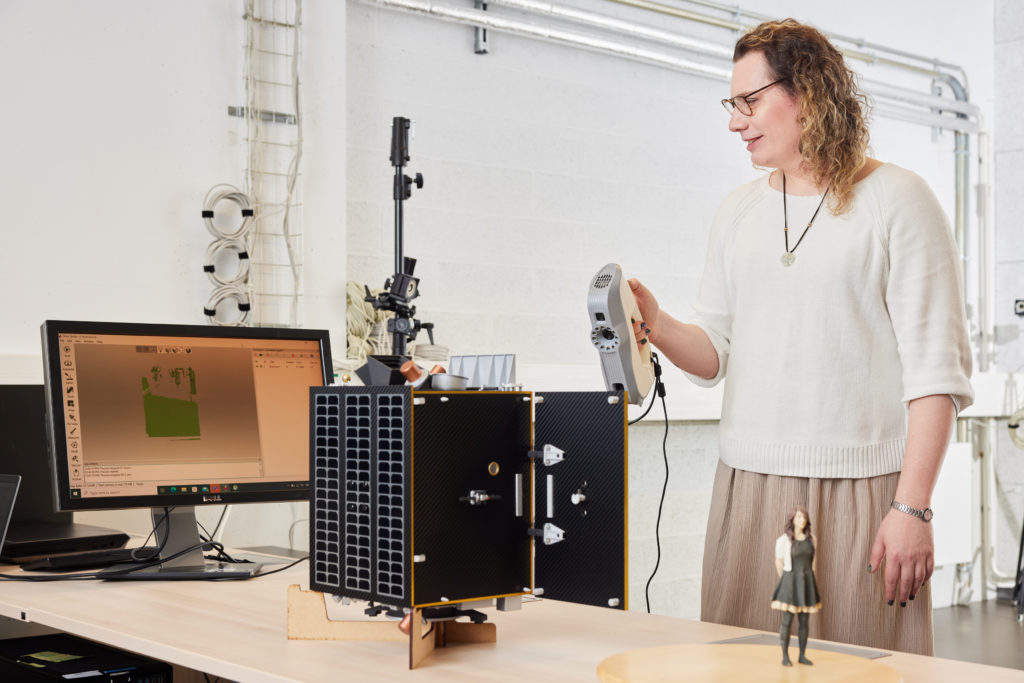Autonomous vehicles & IoT

The metaverse is taking shape as we speak, with companies and institutions building premises and launching initiatives in the new virtual world. And while 3D experiences have been permeating our lives for many years now, all conditions are in place for the metaverse to become the next iteration of the internet. From entertainment to shopping, virtual and augmented realities are becoming more and more commonplace – and they are set to grow exponentially in the next few years.
Here in Luxembourg, Artec 3D have been at the forefront of 3D technologies since 2007. In fact, their line of handheld scanners have uses across industries – including archaeological projects, helping astronauts to train for space travel, as well as creating lifelike limbs for amputees. They’ve been working together with the University of Luxembourg’s Interdisciplinary Centre for Security, Reliability and Trust (SnT) since 2016. Now in its eighth year, the partnership initially explored 3D face modelling for access control, and 3D body modelling, utilising the Shapify booth developed by Artec 3D.
Together, they collected data – 3D body scans with high resolution texture – from over 3000 people in Luxembourg to help them develop AI algorithms to estimate the shape of bodies under clothing, which has applications in both security as well as for retail. Their new projects are now venturing into the area of computer-aided design (CAD).
Gleb Gusev, Chief Technology Officer of Artec 3D, commented, “The AI/ML community have already made huge achievements in dealing with 1- and 2-dimensional data such as speech, text, and images using neural networks. With the aid of AI, we are now able to elevate our comprehension of 3D data to a new level. As a result, we can achieve more ambitious goals, such as automatic data completion and automatic mesh-to-CAD conversion, utilizing AI-based algorithms.”
“Modelling the 3D world is crucial for unleashing the potential of the metaverse; from achieving realistic representations of any digital asset in 3D, to modelling humans, their bodies, faces, garments, motions, and interactions. Moving towards user-friendly, easily editable representations, is what will make a difference in the digital experience. Our long-term partnership with Artec 3D, in the form of a series of projects, reflects our joint efforts in contributing towards this vision of a powerful digital world with tremendous possibilities,” said Prof. Djamila Aouada, head of the Computer Vision, Imaging and Machine Intelligence (CVI2) research group at SnT.
Prior to the 1960s, drawing out designs was the norm across so many engineering industries – from vehicle design to architecture. In 1963, the first edition of a computer-aided design (CAD) program was released and led to many subsequent leaps in what designers were able to create. Engineering steadily went from an art form to a tech role – and from there it was time to start putting away the pencils.
Technological advancements are still being made in CAD programs that are making engineers more capable than ever before. And, as part of a partnership between the CVI2 research group at SnT and Artec 3D, together they’re working on further advancing CAD by developing AI models that would allow an intelligent reverse engineering from a 3D scanned object to its corresponding CAD.
"Moving towards user-friendly, easily editable representations is what will make a difference in the digital experience. Our long-term partnership with Artec 3D reflects our joint efforts in contributing towards this vision of a powerful digital world with tremendous possibilities"
Prof. Djamila Aouada, SnT Tweet

CAD requires skilled engineers to operate, as it is a technical process based on strong human intuition. As such, it’s been permeated little by AI over the years. But, more recently, AI has become able to complete tasks that were once thought to only be possible by humans. Within their partnership, SnT and Artec 3D are aiming to create AI algorithms that can take a scanned object and recreate it in a CAD program, which can then show exactly how it was originally designed and subsequently allow for modifications to be made to the object plan. Until now, making changes to something that already exists would require the original CAD model, but being able to reverse engineer and automate an object’s design would save valuable resources.

“Using CAD is a technical skill that is still mostly driven by human intuition,” explained Dr. Anis Kacem, a research scientist within SnT’s CVI2 research group. “As engineers gain experience, their design intuition allows them to think ahead and take the right actions at all stages of the design process. Using technical constraints as clues, our cutting-edge AI technology will allow machines to learn design intent and the thought process guiding CAD designers,” Dr. Kacem continued.

“Using technical constraints as clues, our cutting-edge AI technology will allow machines to learn design intent and the thought process guiding CAD designers.”
Dr. Anis Kacem, SnT Tweet
The CVI2 group is currently working on a research programme with Artec 3D comprising different projects under an umbrella partnership agreement between SnT and the company, with the aim of developing a complete pipeline that automates the 3D reverse engineering of CAD models from 3D scans by mimicking the design intent.
Two of the projects, entitled Constrained Sequence modelling of CAD for reverse Engineering from 3D Scans (CASCADES), with doctoral researcher Elona Dupont, and Feature-based Reverse Engineering of 3D Scans (FREE3D), with doctoral researcher Ahmet Karadeniz and postdoctoral researcher Sk Aziz Ali, are also supported by the Fonds National de la Recherche’s (FNR) Industrial Fellowship and BRIDGES grants, respectively. Both funding schemes support industry collaborations with research institutions, and researchers with gaining experience in the private sector. Doctoral researcher Kseniya Cherenkova is also conducting research in the framework of the SnT-Artec 3D partnership.
Together, the CVI2 group is contributing to the creation of an AI-powered, user-friendly digital world, with a direct impact on a metaverse in which 3D digital assets are easily editable.